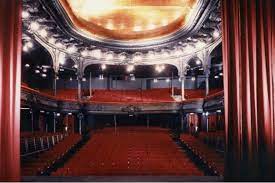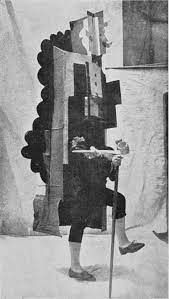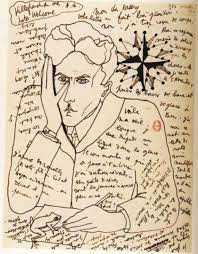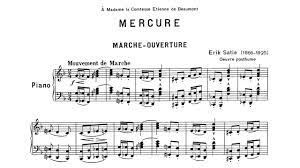Last night was the much-anticipated premier of the ballet Mercure: Plastic Poses in Three Tableaux, as part of the first season of Soirees de Paris, produced by patron of the arts Count Etienne de Beaumont, 40, and Russian choreographer Leonide Massine, 27.

La Cigale Theatre
De Beaumont’s coup was to reunite for the first time most of the talent that produced the revolutionary ballet Parade seven years ago. He already had Massine, so he commissioned Erik Satie, 58, to write the music, and Pablo Picasso, 42, to design the sets and costumes. Left out was the fourth talent from the previous production, writer Jean Cocteau, 34.

Costume for Parade by Pablo Picasso
The others have resented how much credit Cocteau has taken for the success of Parade. The extremely moral Satie was particularly upset about Cocteau introducing two young composers to opium in Monte Carlo—and said so in print.

Self-portrait by Jean Cocteau
So instead of inviting him to collaborate, they decided to get back at Cocteau by making a ballet about the Roman god Mercury, Cocteau’s favorite character, and having Massine dance Mercury as a scheming, scenery chewing bombast. They also parodied Cocteau in the second tableaux, “Characters of the Three Graces,” which features three men in drag with huge papier-mache breasts sharing a tub together.
Satie has felt that Massine rushed him on the music, and what was planned as an eight-minute piece has now doubled in length.

Mercure score by Erik Satie
At the premier last night, all of cultural Paris was there, including Russian ballerina Lydia Lopokova, 32, who should have been on stage dancing. She’s been with Soirees de Paris since it started in mid-May and was supposed to perform in Mercure.
But Lydia couldn’t take it anymore. She’s been fighting with de Beaumont, Massine, the lighting designer and the rest of the company. Lydia thinks all this Surreal twaddle is ridiculous. She drew her line at performing with the three men in drag in what she called this “stupid fake,” and stormed out of rehearsal just a few days ago.
There was a lot of tension in the theatre last night, mostly pitting supporters of Satie against the Surrealist fans of Picasso, led by writer Andre Breton, 28, who kept chanting,
Bravo Picasso! Down with Satie!”
until the performance had to be temporarily stopped. Someone cried out from the crowd,
Only Picasso lives, down with Beaumont’s garçons and the whole Soirées de Paris!” ”

Andre Breton
The Satie supporters yelled insults up at Picasso’s box in the theatre.
Police arrived. One of the Surrealist Picasso supporters jumped on the stage and shouted,
In the name of God, down with the cops!”
who then dragged him off.
When things calmed down, the ballet continued.
Today, the consensus seems to be that Picasso’s designs were the real star of the show, and that, artistically, there really wasn’t much to be upset about.
*****
On the other side of town, ex-patriate Irish novelist James Joyce, 42, is recuperating from surgery, yet again, with bandaged eyes in this clinic. Joyce notes that he set his novel, Ulysses, published two years ago, on this date in 1904. He writes in his notebook,
Today 16 of June 1924. Twenty years after. Will anybody remember this date?”

Ulysses by James Joyce
N. B.: Thanks to Marie-Chantal Douine for help in identifying locations in Paris.
“Such Friends”: 100 Years Ago… is the basis for the paperback series, “Such Friends”: The Literary 1920s. Volumes I through V, covering 1920 through 1924 are available at Thoor Ballylee in Co. Galway, and as signed copies at Pan Yan Bookstore in Tiffin, OH, City Books on the North Side and Riverstone Books in Squirrel Hill, Pittsburgh, PA. They are also on Amazon.com and Amazon.co.uk in print and e-book formats. For more information, email me at kaydee@gypsyteacher.com.
If you want to walk with me through Bloomsbury, you can download my audio walking tour, “Such Friends”: Virginia Woolf and the Bloomsbury Group.
Manager as Muse, about Scribner’s editor Maxwell Perkins’ relationships with F. Scott Fitzgerald, Ernest Hemingway and Thomas Wolfe, is also available on Amazon.com and Amazon.co.uk in both print and e-book versions.


























